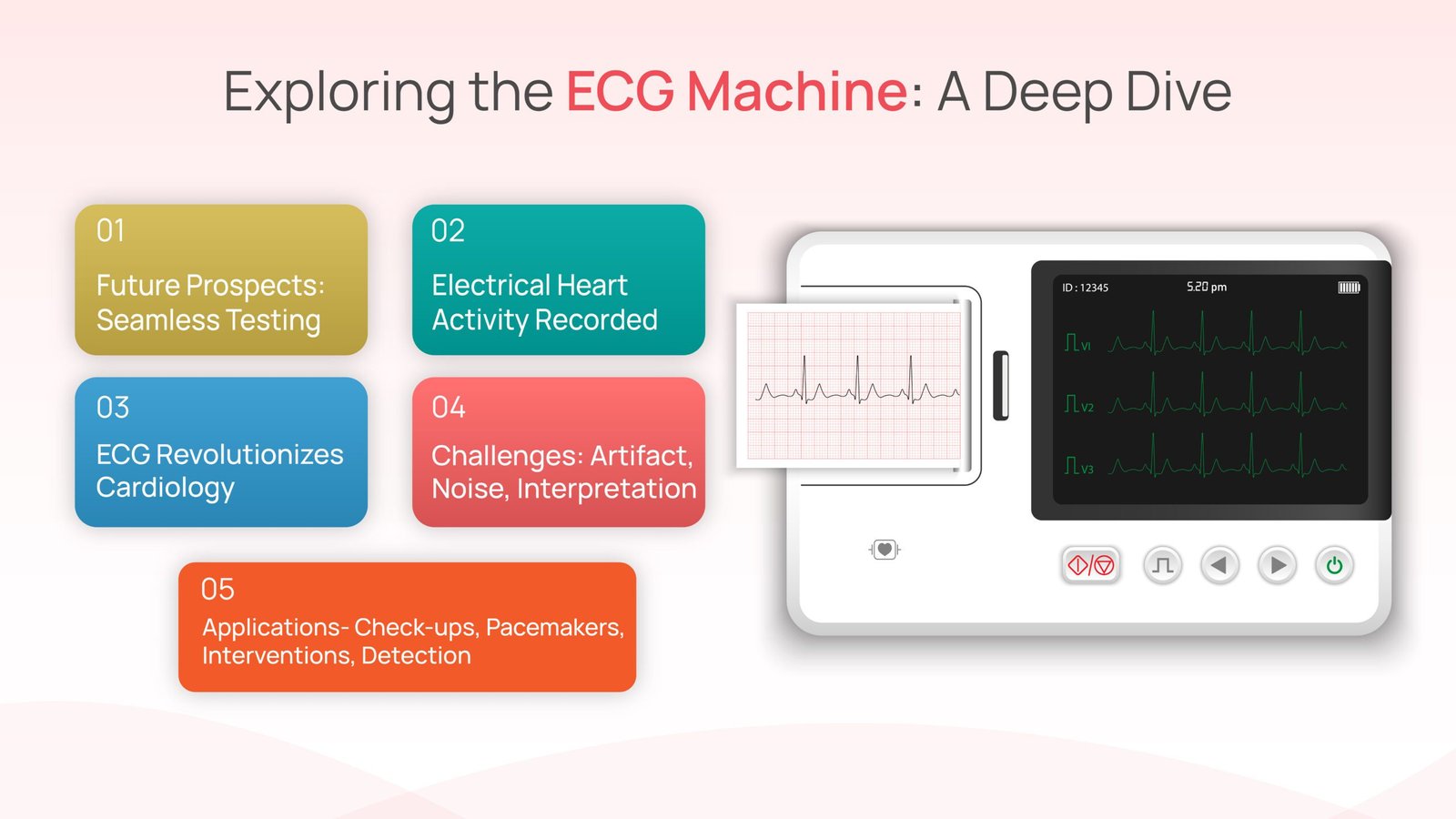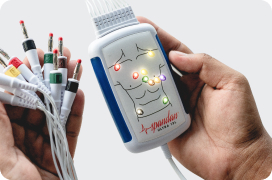
Author:- Mr. Ritesh Sharma
With the invention of the ECG machine, the domain of cardiology was forever revolutionized. This staggering technology of gauging the electrical activity of the heart proved to be life-saving for patients with chronic heart problems. Not only this, but with the help of the ECG machine, patients with developing symptoms of heart problems, such as heart palpitations were able to detect their issues promptly. Hence, it would be appropriate to say that electrocardiogram altered the realm of the healthcare for better forever.
The significance of ECG in the cardiac health monitoring can simply not be overstated. With its clinical accuracy and ability to detect numerous heart problems, the ECG machine has become an integral part of healthcare without which even imagining cardiac care is impossible now. There are multiple facets of the ECG device that never fail to compel people. Through this blog, we will try to examine all the facets of ECG machines in cardiac health monitoring in a detailed manner.
Basics of the ECG Machine
Before exploring the ECG machine in an elaborate way, let’s try to understand its basics. In a nutshell, the electrocardiogram machine records the electrical activity of the heart over a span of time, typically a few seconds. The electrical activity of the heart is a crucial part of cardiovascular well-being. It reflects the rhythm and function of the heart. The machine produces a graphical representation of the heart’s electrical activity.
This graph showcases various waves and intervals related to the various phases of the cardiac cycle. The diagnostic test identifies even smallest of the cardiac arrhythmias to big heart problems like myocardial infarction (heart attack).
Components and Functionality of an Electrocardiogram Machine
There are basic four components of an ECG machine- electrodes, leads, amplifiers, and a display unit. The healthcare professionals strategically place the electrodes in various parts of the body of the patient, such as the chest, limbs, or torso. The basic work of these electrodes is to capture electrical impulses generated by the heart.
Once these electrical signals are captured by the electrodes, they pass through the leads to the amplifiers. Here, the signals are enhanced in strength to give an accurate analysis of the heart’s electrical activity. At last, the amplified signals are displayed on a screen in the form of waves and printed onto paper for further analysis of the heart’s abnormalities.
The signals are displayed on the screen as P-wave, QRS complex, and T-wave. The representation of these waves on the monitor determines if it is a normal ECG or an abnormal ECG. The functionality of the ECG depends on these waves- P-wave represents atrial depolarization (electrical impulses generated by the heart during contraction of atria), QRS complex represents ventricular depolarization (electrical impulses generated by the heart during contraction of ventricles), and T-wave represents ventricular repolarization (relaxation of ventricles prior to next contraction).
Clinical Applications
The ECG device has numerous clinical applications, these clinical applications include:-
- Routine Check-ups and Detection: ECG devices are used in routine check-ups for the assessment of cardiac health, diagnosing arrhythmias of different arrhythmia classifications, and detecting myocardial infarctions (heart attacks).
- Evaluation of Pacemakers and Other Cardiac Devices: Through ECG devices, healthcare professionals can evaluate the effectiveness of pacemakers and other cardiac devices.
- Immediate Medical Interventions: ECG devices come in handy for immediate medical interventions when there is a requirement for prompt medical assistance. It can detect heart abnormalities immediately so that healthcare professionals can start the treatment as soon as possible.
- Detection of Developing Heart Problems: Through an ECG device, healthcare professionals can detect the presence of developing heart abnormalities in patients so that they can nip it in the bud.
Evolution of ECG Technology
The ECG technology spans over a century. The ECG machine has undergone continuous innovation and refinement over the last few decades. From the first rudimentary devices developed in the early 20th century to the portable ECG devices of today. The evolution of electrocardiograms in the domain of healthcare has been nothing short of remarkable.
The ECG has evolved so much today, that it is possible to identify the P-wave ECG abnormalities, QRS complex abnormalities, and T-wave abnormalities at home through portable machines. These portable ECG machines take a few minutes and minimal pieces of equipment to give you accurate results of your heart’s electrical activity. Moreover, portable ECG machines are continuously undergoing further evolution with more advancements in technology. In addition to evolution in clinical practices, portable ECG machines also give users the advantage of performing ECG tests at home at their own convenience.
This way they can generate ECG test reports in the form of a PDF at home and send them to their healthcare professionals for further evaluation.
Challenges and Future Prospects
Despite being highly advanced and significant in the domain of cardiac care, ECG technologies often face some challenges. These challenges include artifact interference, signal noise, and interpretation errors. However, with advancements in technology, many efforts are being made to overcome these challenges and make the ECG machine seamless to use for both doctors and users.
In conclusion, the ECG machine innovation was a huge stride in the realm of cardiac care for doctors and users, and now with the invention of portable ECG devices, ECG tests have become easier than ever. Further advancements in the technology ensure even more seamless and smooth testing of the heart’s electrical activities for both chronic heart patients and patients with developing heart problems.




